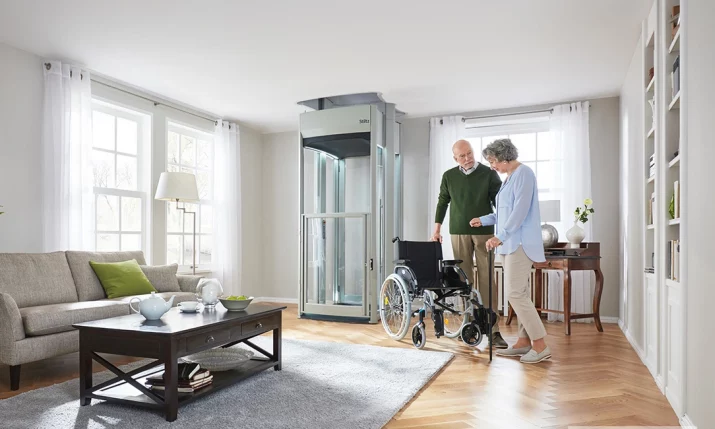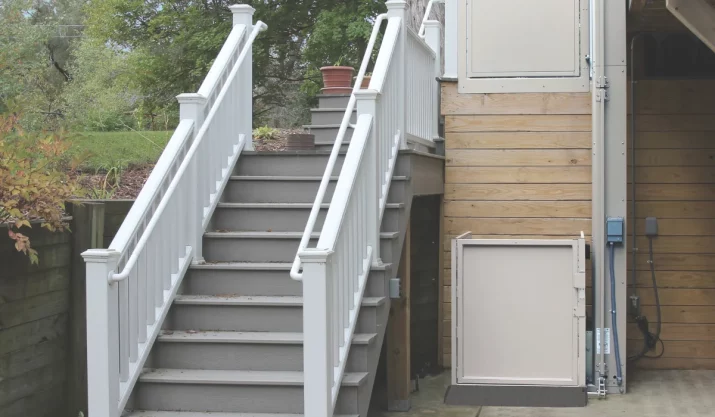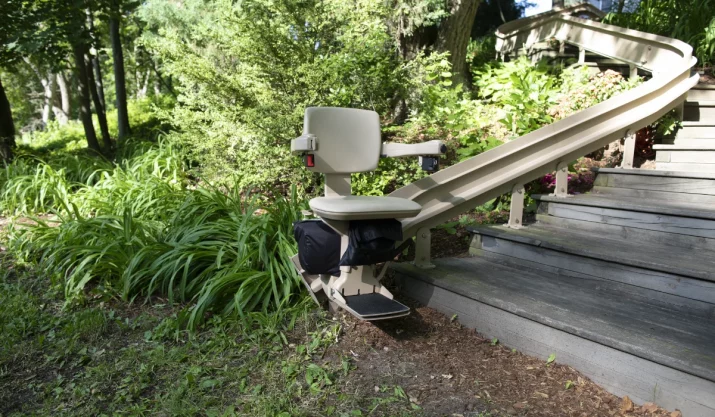How Home Elevators Can Improve Caregiver Efficiency

Table of Contents
Caring for an older adult in a multi-story home brings a unique set of challenges, especially when stairs become a daily obstacle. For caregivers managing everything from medication to meals, those extra flights of stairs aren’t just inconvenient. They’re a daily hurdle.
That’s where the benefits of a home elevator go far beyond luxury or aesthetics. They’re about time, safety, and sustainability, both for caregivers and those they care for.
In this article, we’ll walk through how home elevators can make life easier for caregivers and safer for family members with mobility issues, while also offering long-term value for homeowners.
Key Takeaways
- Home elevators save time and energy for caregivers by reducing the number of trips up and down stairs, especially when transporting heavy or essential items.
- They enhance safety for loved ones with mobility challenges, significantly lowering the risk of falls on stairs, a major cause of injury among older adults.
- Elevators increase accessibility throughout the home, allowing individuals to move independently and helping caregivers shift from constant supervision to supportive care.
- Installing a home elevator adds long-term value, making the home more appealing for aging in place and attractive to future buyers seeking accessible features.
Fewer Trips, More Time: Efficiency Gains for Caregivers
If you’re a caregiver, you know how demanding it is to juggle tasks, prepare meals, carry laundry, bring up medication, all while ensuring your loved one is comfortable and safe. Installing a residential elevator means you no longer have to make multiple trips up and down stairs to handle everyday tasks. It consolidates your movement and saves valuable time.
Need to move heavy items like medical supplies, groceries, or laundry baskets? A home elevator allows you to do it in a single, safe trip, instead of hauling loads step by step. The physical relief this provides can make a big difference, especially if you’re caregiving full time.
Safer Movement for Everyone in the Home
Safety is often the biggest reason families look into a home elevator installation. When your loved one has mobility challenges or limited mobility, even a short staircase can be dangerous.
Falls on the stairs are a leading cause of injury among older adults, and they often lead to hospitalization or long-term loss of independence.
By providing a smooth, level alternative to staircases, home lifts minimize that risk significantly. And for caregivers, that peace of mind is priceless. You don’t have to shadow every stair climb or worry about late-night bathroom trips when you know they can safely use the elevator instead.
More Accessible Living Spaces
In many multi-story homes, bedrooms and bathrooms are on the upper floors, while kitchens and living rooms are downstairs. That layout can create barriers to daily living for those with mobility limitations. A home elevator restores both accessibility and functionality to the entire living space, making it easier for everyone to move around the home.
For caregivers, this simplifies things like helping with dressing, bathing, and preparing meals. It also promotes autonomy, when your loved one can get to all parts of their own home without help, your role as a caregiver shifts from constant supervision to supportive assistance.
Easier Aging in Place
One of the top reasons families install residential elevators is to support the desire to age in place. A well-placed elevator allows your loved one to stay in the home they know, surrounded by familiar neighbors and routines, without needing to downsize or relocate.
This also reduces future caregiving strain. As needs increase, the home is already prepared to accommodate them. No costly renovations, no frantic rush to find an accessible home, the current space is already adapted to evolving needs.
From walkers to wheelchairs, a home elevator adapts as mobility needs change, making it a smart way to future-proof the home.
Less Physical Strain on Caregivers
Let’s not ignore the toll caregiving can take on your body. Lifting, bending, carrying, it all adds up. Especially in homes where the stairs feel endless. A home lift can help reduce that wear and tear, and in some cases, may even help you continue caregiving longer without injury.
If you’re helping someone transfer from a chair to a bed, then back into a mobility device to get up the stairs, you’re using a lot of energy. When the elevator does the climbing, you can focus on hands-on care without the added exertion.
Long-Term Home Value
The benefits of a home elevator aren’t just about daily convenience; they extend to the value of your home. As more homebuyers look for accessibility features, especially in California’s competitive real estate market, having a home elevator can make your home more appealing to potential buyers.
Even if you’re not planning to sell soon, an elevator installation can boost the long-term property value and the resale value of your home. It’s also an attractive feature for multi-generational households, where older relatives live under the same roof.
What to Expect from an Elevator Installation
You might be surprised to learn that many modern home elevators don’t require a large machine room or major structural changes. Some models are space-saving enough to be installed in a corner or closet-sized area.
An experienced elevator company like California Mobility will guide you through the installation process, helping you choose a style that works with your home’s design, your mobility goals, and your budget.
Final Thoughts
A home elevator isn’t just a convenience; it’s a caregiving tool. It can mean the difference between a physically exhausting routine and a manageable one. Between worrying about stairs and trusting that your loved one can move through the house safely. Whether you’re helping a parent, partner, or other family member, anything that eases the load matters.
And in the bigger picture, it’s about helping your loved one hold onto independence while supporting your well-being as a caregiver. In the end, improving day-to-day mobility with a home elevator doesn’t just ease caregiving, it enhances the overall quality of life for everyone in the household.
If you’re planning for long-term care or simply trying to make life a little easier now, it might be time to consider how a home elevator fits into your next step.
Need help navigating your options? Talk to a local mobility expert who understands California homes and knows how to make your space work for your caregiving needs.








